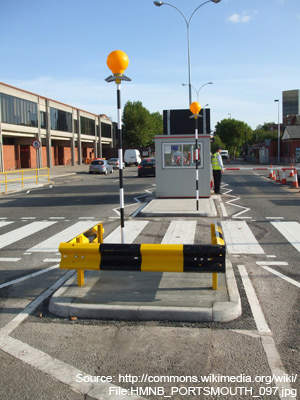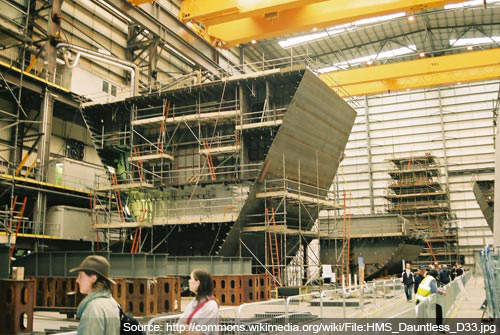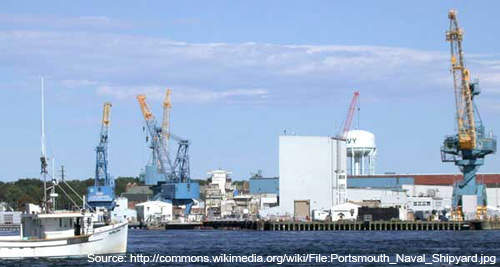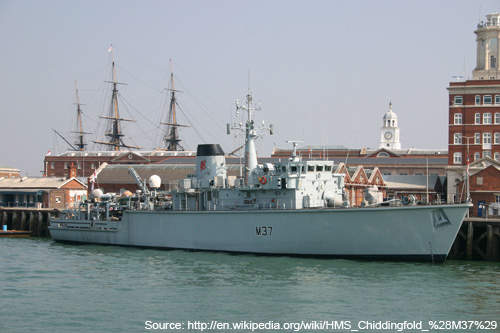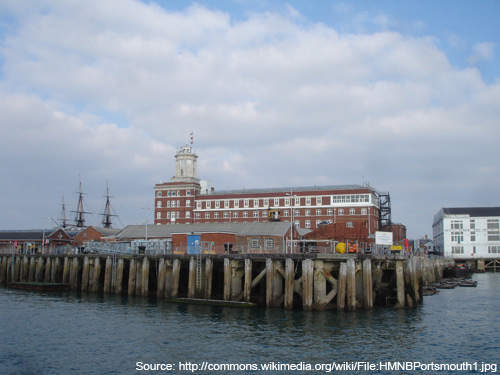Her Majesty’s Naval Base (HMNB) Portsmouth is the home port to 60% of the Royal Navy’s surface ships. The port is controlled and operated by the Royal Navy in cooperation with BAE Systems Surface Ships (previously known as BVT Surface Fleet). The base is also known as HMS Nelson.
The port houses several organisations, including the Naval Historical Branch, Royal Marines School of Music and Portsmouth Historic Dockyard. It employs over 17,000 people and has generated over 26,000 defence jobs in the region.
Her Majesty’s Naval Base location and layout
The naval base is located on the eastern shore of Portsmouth Harbour in Portsmouth, Hampshire, United Kingdom. The port’s main entrance is located at Unicorn Gate and can be reached by the M275 motorway. It is spread over an area of 120ha.
Portsmouth naval port history
Naval ship building and repair operations started at the port when the first dock was built in 1194. The world’s first dry dock was constructed in 1495. The keel of the Mary Rose was laid down in 1509.
The Old Naval Academy was established in 1733 and the dockyard became the largest industrial site in the world by 1850. The first oil-fired battleship, HMS Queen Elizabeth, was built in 1913. The Naval Base integrated with HMS Nelson in 2000.
HMNB operations
The base is the home port to 42 ships of the Royal Navy, including three aircraft carriers, six Type 42 destroyers, six Type 23 frigates, eight Hunt-class minehunters, three offshore patrol vessels of the Fishery Protection Squadron, 14 vessels of the First Patrol Boat Squadron, and HMS Endurance and HMS Clyde. Two new Royal Navy aircraft carriers, HMS Queen Elizabeth and HMS Prince of Wales, will also be based at the port.
The commercial shore activities include shipbuilding and repair, naval logistics, accommodation and messing. The public / private partnership between the Royal Navy and BAE Systems Surface Ships provides fleet maintenance, logistics, communications and base support services.
BAE Systems Surface Ships’ shipbuilding facility is located in the port. It is currently building sections of the Royal Navy’s new Daring Class destroyers, which will be based at the Portsmouth naval base.
Naval base garrison facilities
The naval base has 15 working dry docks, 62 acres of basins and a three-mile-long waterfront. The maritime logistics organisation in the port will provide 80% of all non-explosive stores to the surface fleet and 65% of the needs of UK naval customers and ships across the world.
Harbour control communications
The Queens Harbour Master (QHM) monitors and controls all ship movements. QHM harbour control, situated at Semaphore Tower, manages radar coverage of the port approach channel. Channel 13 is generally used by the naval tugs. The information is recorded by the radar and CCTVs.
The port is equipped with the largest digital wireless public address system for internal communication purposes. The system has three computer-controlled base stations, which provide full audio coverage over the port. It uses digital radio technology designed by the military for battlefield communications.
Other naval base facilities and services
Military diving training for the Royal Navy and Army forces is provided by the Defence Diving School (DDS). The major training facilities include a 1,000m salt water lake, a 5m diving tank, recompression chambers and other facilities.
The submarine escape training tank (SETT) is located at Gosport. The facility trains submariners to escape from a distressed submarine. The tank has a depth of 100ft, a diameter of 18.25ft and can hold 150,000gal of fresh and chlorinated water.
SETT trains around 1,500 submariners from Royal Navy and Army. Training is also provided to submariners from other navies.
Portsmouth naval base development
A major expansion has been planned to improve the Portsmouth naval base facilities over the next ten years. The £60m project includes the dredging of a deeper channel to Portsmouth, dredging of the main channel inside the harbour and refurbishment of various jetties. These new improvements will enhance the accessibility for the new aircraft carriers due to enter service in 2014.

